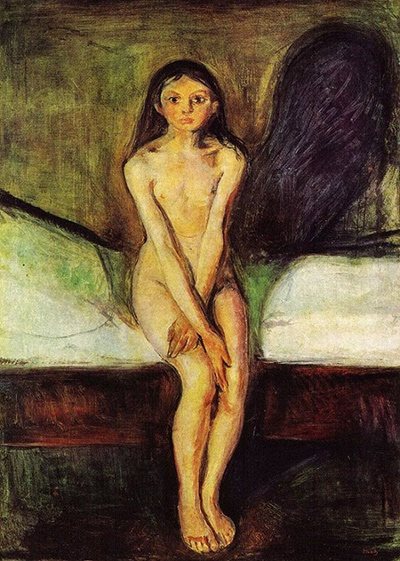Edvard Munch's painting called puberty was painted between 1894 and 1895, following an impressionistic style.
At the time, he was working on numerous works that would later be known as his puberty period work and this painting was created near the end of that period. There is speculation that he used a model to complete the work since the specific detail on the painting is highly accurate, especially surrounding the collar bone area. It is noted that this piece was a turning point for him in his painting career. Many believe that Puberty was the spark to his increased personal expression in all of his works that followed.
The painting is not the original version as it was destroyed in an earlier fire. He then reproduced the painting. He girl sitting naked on the edge of the bed is believed to be at the age of puberty. She holds a shy pose with her closed arms and legs that some feel symbolizes sexual repression that she is experiencing. Edvard himself felt sexually repressed during this time of his life, which is believed to be mirrored in the painting on the girl.
A point of great discussion surrounding the painting is the shadow being cast behind the girl. It is thought of by many as indicating genitalia. However, observers are torn between whether they are male or female genitalia. The painting brought about controversy at the time and in the times that followed due to the strong sexual nature of the content and the controversy that surrounded it. There is still great speculation as to the model in the painting, the details surrounding its creation and the true meaning of the painting.
The painter Edvard Munch is of Norwegian decent, born 12 December 1863. In his works, he focused mainly on evocative psychological themes that were often provocative. Many believe that his works built the groundwork for Symbolist artists such as Gustav Klimt in the late 19th-century. Edvard also had great influence over the German Expressionism movement of the early 20th Century. He is most notably known for his painting called The Scream which he created in 1893.




